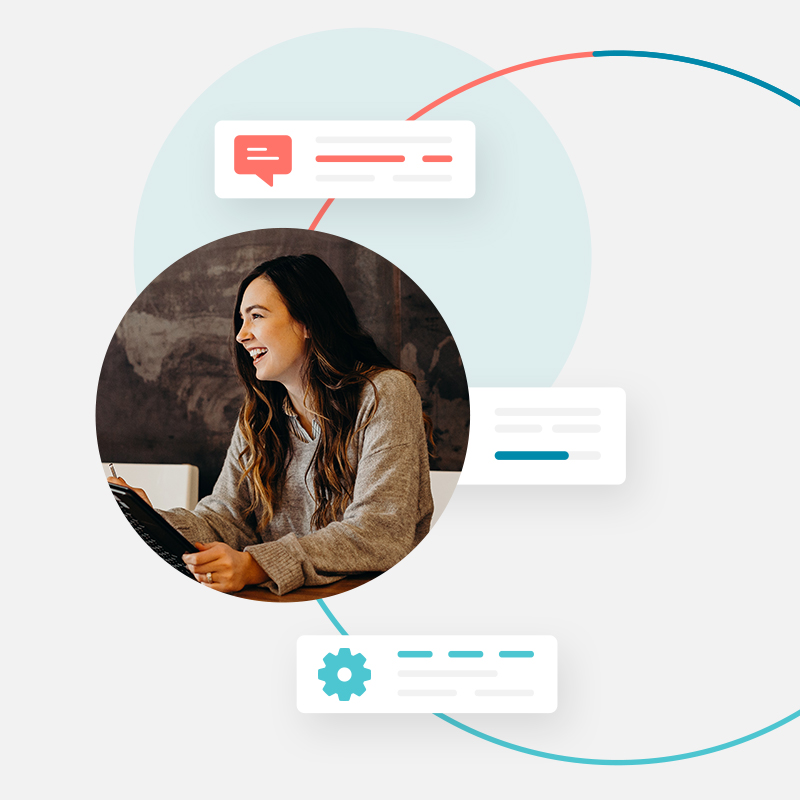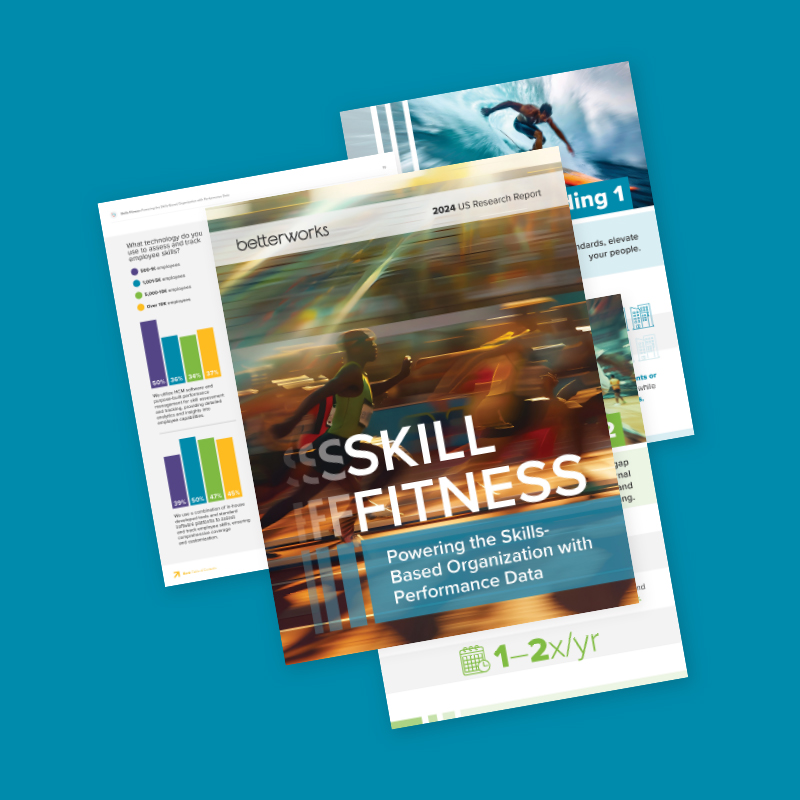The HR trends in 2024 reflect a seismic shift in technology and employer and employee expectations. The changes that have rocked HR in the past several years have now given way to forces that are profoundly reshaping the role of HR leaders, the way people will work, and how everyone’s contributions will be assessed.
The impact of generative AI, a multidimensional skills “squeeze,” and a renewed focus on productivity present several HR challenges. At Betterworks, we believe that the solution to many of these changes will require that HR provide an enlightened approach to performance management that will enable employees to remain agile, focused, aligned with the business, and empowered to achieve and innovate. We’ve asked our leadership to weigh in on what they believe HR leaders can expect in 2024 and share their assessments below.
As we dive into the early days of 2024 and look at the workforce and HR trends that will shape our world, it’s worth understanding the recent forces that brought us to this point. Emerging HR trends are often reactions to — and sometimes carryovers of — workplace, cultural, and economic shifts of the recent past. They reflect our responses to technological advancements and our unmet needs. So, before we dive into HR predictions for 2024 with Betterworks’ industry veterans and subject-matter experts, it is worth taking a quick glance in the rear-view mirror at some of the major HR trends of the past year. Given the influence of the past on the present, these objects may be larger than they appear as we look toward the HR trends for 2024.
HR trends that shaped us in 2023
The anticipated “Great Return” to work debate ignited widespread workforce demands for continued flexibility and solidified hybrid work as the culturally accepted standard for work, even as a few high-profile CEOs demanded their employees return to the office full-time due to concerns about cultural cohesion and productivity.
By mid-year, hybrid work models had become the dominant form — here to stay for most workers — and required companies to address challenges like collaboration and communication. Worries about hybrid burnout arising from blurred work-life boundaries led to discussions about employee well-being and strategies for disconnecting at the end of the “workday” to combat burnout. The four-day workweek also gained traction and legitimacy among companies large and small, in part as a way to improve both work-life balance and productivity.
The “quiet quitting” phenomenon, which spun up in 2022, continued in 2023, as a growing wave of employees decided that they would do the minimum required to keep their jobs, but not go above and beyond. Meanwhile, high-performing employees saw an opportunity to expand their skills and value to their organizations through the “quiet hiring” trend in which employers gave additional work to existing employees and freelancers to avoid the costs associated with hiring new employees. Employees gained new skills and opportunities for internal mobility while companies were able to reduce recruitment costs and expand skill sets in a tight labor market.
The other two major HR trends of 2023 remain major forces impacting current HR trends: the skills shortage and the rise of generative AI at work. Upskilling and reskilling initiatives continued to be a top focus to address a tight labor market and a skills shortage last year. In 2024, as we explain below, multiple forces will continue to put increased pressure on HR to find new ways to address this gap. And, the biggest technology of the year in 2023 — generative AI — continued its meteoric rise, infiltrating workflows and workforces. GenAI generated both apprehension and anticipation — from worries about safety and how to upskill entire workforces to adapt to AI to elation about how it will improve efficiency and productivity while also giving employees greater freedom and power to innovate.
And with that recap, let’s now look forward into the near future and what HR leaders can anticipate.
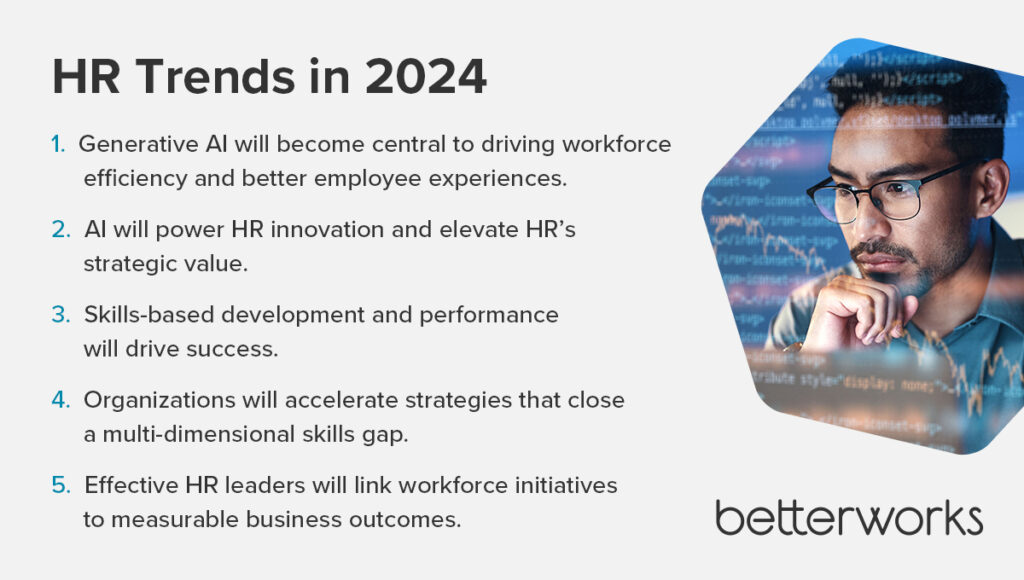
HR trend 1: Generative AI will become central to driving workforce efficiency and better employee experiences
If 2023 was the year of generative AI making its way into the public consciousness, then 2024 will be the year that businesses begin to sharpen their strategies around it. The efficiency gains are clear, and employees quickly caught on to the fact that services like ChatGPT have value beyond functioning like a sophisticated search engine. They’re already using it to perform work tasks, like writing performance reviews or feedback to their peers, with or without the support of their company’s IT team.
But the benefits of AI go much further. For example, Betterworks is enabling managers to be more effective coaches by helping them identify whether employees are making appropriate progress against their goals — and if not — making data-driven recommendations so the manager can reach out and remove roadblocks. We’re also leveraging AI to help create more accurate and unbiased performance evaluations using an employee’s performance data. I think in the coming year, we’ll see more and more CEOs and CHROs stepping up and embracing the opportunity to not only help their employees be more productive with AI but harness its power to build more equitable and fair workplaces.
— Doug Dennerline, CEO

HR trend 2: AI will power HR innovation and elevate HR’s strategic value
In 2024, the landscape of HR technology is poised for a revolutionary shift as generative AI plays a central role in optimizing workflows. From recruiting to talent management and beyond, the infusion of generative AI promises to supercharge the capabilities of managers and HR business partners, empowering them to drive tangible business results. Organizations will unlock new efficiencies in talent acquisition, identifying and nurturing top talent, aligning rewards with performance, and implementing intelligent succession planning strategies.
With generative AI seamlessly integrated into HR workflows, managers and HR professionals will be able to make informed decisions at every stage of the employee life cycle — from identifying high-potential candidates and personalizing employee development plans to dynamically adjusting compensation structures. By automating routine tasks and offering data-driven recommendations, generative AI liberates HR professionals to focus on strategic initiatives, fostering a more agile and responsive organizational culture.
Looking ahead, the symbiotic relationship between human expertise and AI-driven insights will redefine the role of HR in driving organizational success. HR professionals can elevate their strategic impact, paving the way for a future where talent management is not just a function but a strategic imperative driving sustainable growth and innovation.
— Cheryl Johnson, Senior Vice President, Engineering
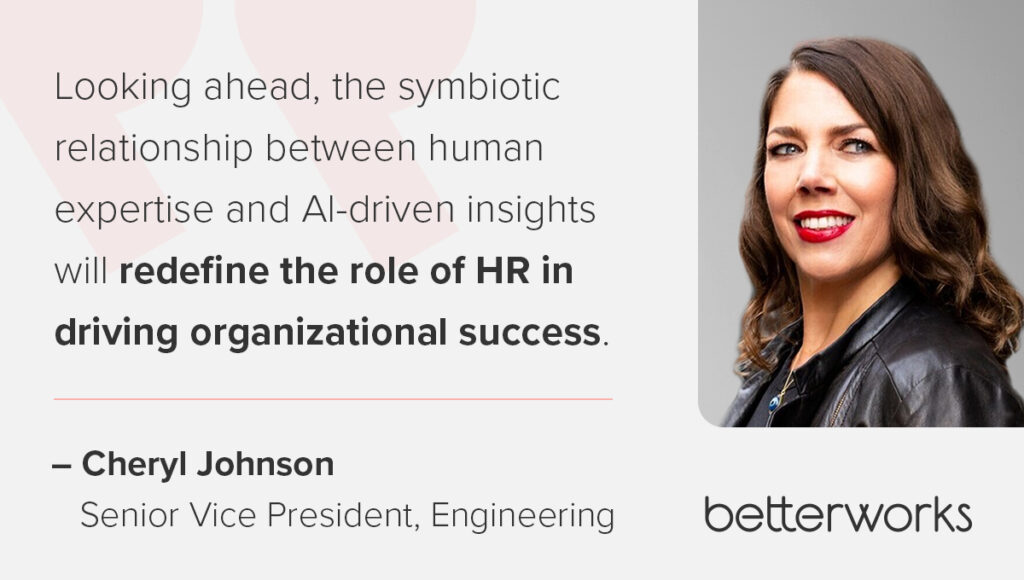
HR trend 3: Skills-based development and performance will drive success
Skills will take center stage this year, strengthening their position as the “currency for talent and business.” Every employee must have a skills profile to understand how they are doing in their current role and how they can evolve to other roles. Likewise, managers will need to speak the language of skills to provide relevant feedback to their team members and help them take on the right professional development opportunities. In turn, this will necessitate that leaders, including HR leaders, have analytics on skills data to understand whether their teams are designed for success now and in the future: Do they have the skill makeup that it takes to adapt to a fast-changing market environment?
While this may seem controversial to some, I believe that talent marketplaces, which have been all the rage these past few years, will be challenged to retain their customers. Staffing people on gigs is useful, but companies want to see ROI in the form of demonstrated employee development and performance, an increase in productivity, and lower turnover. To be truly successful, companies will need a more comprehensive approach that helps teams identify and develop needed skills, uncovers hidden skills and adjacent skills, and provides a system for guiding and monitoring skills development that aligns employees’ interests and the business’ strategic needs.
— Arnaud Grunwald, Chief Product Officer
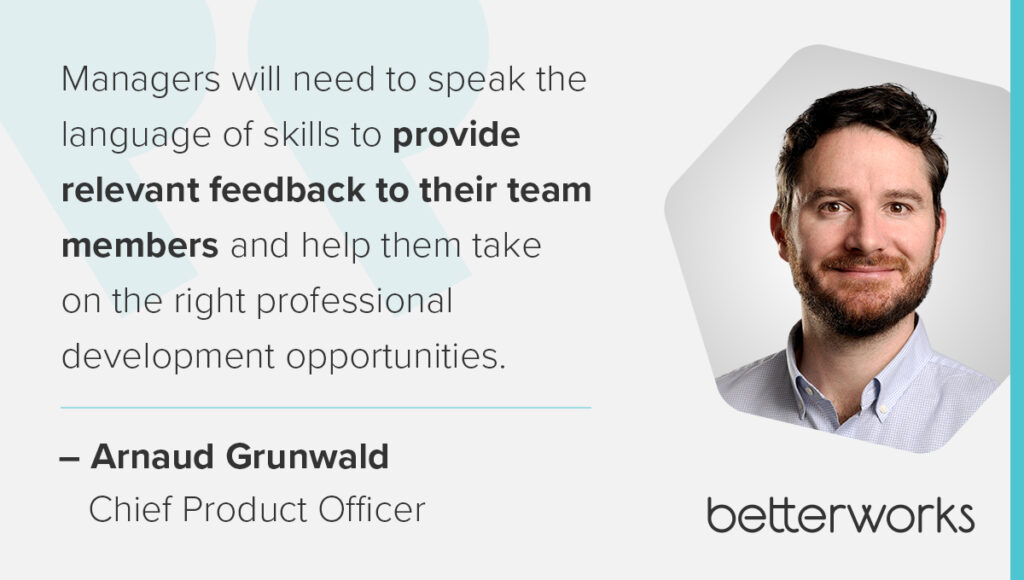
HR trend 4: Organizations will accelerate strategies that close a multi-dimensional skills gap
HR leaders are finding themselves in the middle of a sizable skills gap that they will need to bridge. Think of it as the perfect storm. On the one hand, the continuing tight labor market makes it difficult for companies to find the right people with the right skills. While the acceleration of generative AI will ease administrative tasks and make higher-order activities easier and faster to complete, it is also driving the need for new AI-based skills, requiring massive upskilling and retraining across the workforce.
Simultaneously, the wave of anticipated baby boomer retirements will peak between 2024 and 2027: 4.1 million are expected to turn 65 every year, equivalent to more than 11,000 Americans every day. Even with analysis from Pew Research Center showing that 1 in 5 people over age 65 continue to work, the potential exodus outweighs the number who remain or return. The real issue is the rapid loss of hard and soft skills and cultural knowledge that is about to take place. A recent survey shows that 57% of the aging workforce has transferred less than half of their knowledge to the incoming one, with 21% yet to do so.
HR leaders will need to assess where their organization stands with regard to these skills gaps, understand the business challenges this poses, and double down on strategies to address them. Action may include focusing on development and mentorship programs and implementing AI training.
— Jamie Aitken, VP of HR Transformation
HR trend 5: Effective HR leaders will link workforce initiatives to measurable business outcomes
This year, we anticipate a trend where HR initiatives, particularly those branded as “employee experience,” will face increased scrutiny from CEOs and CFOs. HR leaders will need to align their strategies with business objectives, showing a direct correlation between HR initiatives and enhanced business performance. The focus will pivot toward a more rigorous assessment of these programs. It is no longer just about employee satisfaction or engagement but rather how these initiatives translate into measurable impacts on the company’s financial health and operational efficiency.
It will be crucial for HR leaders to articulate the value of their initiatives in terms of clear business outcomes like their effect on operating margins, enhancing workforce planning capabilities, and boosting employee productivity. The spotlight will be on projects that directly influence the effectiveness and efficiency of both managers and employees.
Strategic alignment will be about creating a symbiotic relationship between employee well-being and organizational success, proving that investing in people is not just a matter of good ethics but also sound business strategy.
— John Schneider, Chief Marketing Officer
Interested in learning more about what HR leaders can do to be prepared to address the emerging HR trends for 2024? Join us at Empower HR on March 14 (Americas) or March 21 (Europe).
Be ready for HR trends for 2024


